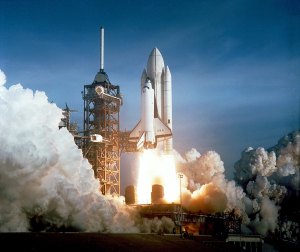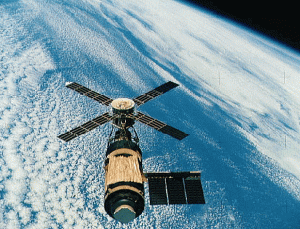![]()
![]() Since 1959, the National Aeronautics and Space Administration (NASA) has successfully launched over 100 manned flights into space. The most successful space programs have been the following:
Since 1959, the National Aeronautics and Space Administration (NASA) has successfully launched over 100 manned flights into space. The most successful space programs have been the following:
Project Mercury (1959-1963) – The first US-crewed program started in 1959, successfully completing six crewed missions. Watch the first part of NASA’s documentary on Project Mercury below, as well as part two and part three.
Project Gemini (1963-1966) – NASA used this program to practice space rendezvous and EVAs, completing a run of ten crewed missions. Part one of NASA’s documentary on Project Gemini (Gemini IV), below, along with part two and part three.
Apollo Program (1961-1975) – Even though there were a total of eleven crewed missions, Apollo 11 featured Man’s very first lunar landing. Watch part one of NASA’s documentary, Apollo 11: For All Mankind, below, as well as part two, part three, and part four.
Skylab (1973-1974) – The first American space station featured three crewed missions, which took place in 1973 and 1974. NASA’s documentary is in two parts: part one is below.
Apollo-Soyuz (1975) – A joint program with the Soviet Union, only one crewed mission took place, but it was historic, nonetheless. Here are parts one (below), two, and three of NASA’s documentary.
Space Shuttle Program | Space Transportation System (STS) (1981-2011) – The longest running program has gone through 133 crewed missions and was the first to make use of reusable spacecrafts. Watch parts one (below), two, and three of NASA’s documentary covering STS-1, Space Shuttle Columbia’s and, indeed, the entire Space Shuttle program’s, maiden flight.
Shuttle-Mir Program (1994-1998) – The result of a Russian partnership, this program completed eleven crewed missions.
International Space Station (ISS) (1998-present) – This is an ongoing collaboration with Russia, Canada, ESA, and JAXA along with co-operators, ASI and AEB. 27 expeditions have maintained a human presence in outer space since 1998, and 34 Space Shuttle missions played a critical role in the construction and delivery of supplies to the ISS. The video below highlights STS-88, the first Space Shuttle mission to the ISS.
There have been many successes with NASA’s space programs. Since 1959, there have only been three failures which resulted in the death of the crew, such as Apollo 1 in 1967, STS-51-L (the Challenger disaster) in 1986, and STS-107 (the Columbia disaster) in 2003. Nonetheless, the purpose of the “Review of United States Human Space Flight Plans” is to examine ongoing and planned National Aeronautics and Space Administration (NASA) development activities, as well as potential alternatives, and present options for advancing a safe, innovative, affordable, and sustainable human space flight program in the years following Space Shuttle retirement. I hope that, within the next few years, we continue to make many historic advances in our ongoing mission to uncover the secrets of outer space with today’s budding scientist and engineers in tomorrow’s fleet of spacecrafts.

























